Book of Mathieu
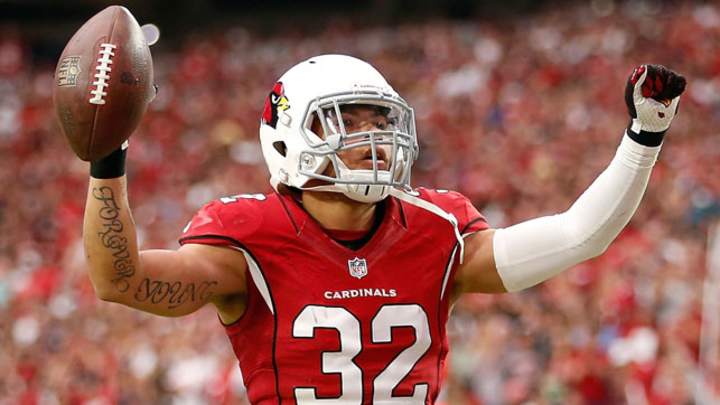
Tyrann Mathieu’s house sits in a cul-de-sac, part of one of those upscale subdivisions that, like saguaro cacti, pepper the outskirts of Phoenix. I’m meeting him here to watch Cardinals film and, hopefully, learn a thing or two about defensive back play. A black Chevy Camaro sits in the driveway. There’s yapping behind the door as I knock. Mathieu appears, wearing sweatpants and a white t-shirt and holding a Yorkie.
He sets down the cantaloupe-sized dog and it runs laps as I’m welcomed inside. The front room, living room and entryway are spacious. Partly because, aside from a long, glossy dining room table set, they’re bereft of any and all furniture. Most of the house, I come to find, is completely bare.
Mathieu and I have never met. But I know his position coach, Nick Rapone, who lit up when I told him I’d be visiting his young defensive back. “You’ll love him—love him,” Rapone said, swiping a hand through the air as if to ward off any imminent naysaying. “He’s a great, great kid.” I was told by Rapone and others that Mathieu’s also quiet. He is, in his demeanor, not in his willingness or aptitude to talk.
Last season, Mathieu was still recovering from a December 2013 knee operation. Because he wasn’t his usual dynamic self in 2014, I thought we’d study a game from his rookie year. I picked Week 3 against the Saints—his first as a pro in the Superdome, less than 10 miles from the neighborhood he grew up in. This also happened to be his most productive game of the season: 10 tackles and an interception (albeit in a losing effort).
I set up my tablet on the dining room table and, after several unsuccessful attempts at inserting the house’s Wi-Fi password—an amalgamation of letters, numbers and symbols that was surely the default upon installation—I plug in my phone and bring up NFL Game Pass.
In this game, Mathieu was only playing in nickel packages. Rashad Johnson was the starting free safety. But this was the game in which Johnson’s fingertip was chopped off in the first half. It’s that injury that I immediately stop and Google when Mathieu tells me he’s never actually seen the clipped finger except for after it was stitched up. He laughs disarmingly at the grotesque image and saying, “It looks like someone just cut it off. I’m trying to figure out how that’s possible.”
A few time-wasting Google searches later, we’re now ready to begin.
* * *
“Here, I’m trying to bluff, I don’t want them to know what coverage we’re in. For me I’m trying to protect the deep ball, especially against the Saints. With any quarterback who’s pretty good, any time they cross that 50 [yard-line] they are going to try to take a shot to the end zone. So for me I just wanted to play outside, at least give my safety a chance.”
So you’re playing to your help?
“Right. Well, trying to.” And here, again, is the disarming laugh.
“This is really the Saints offense, though. They’re going to try to find a mismatch.”
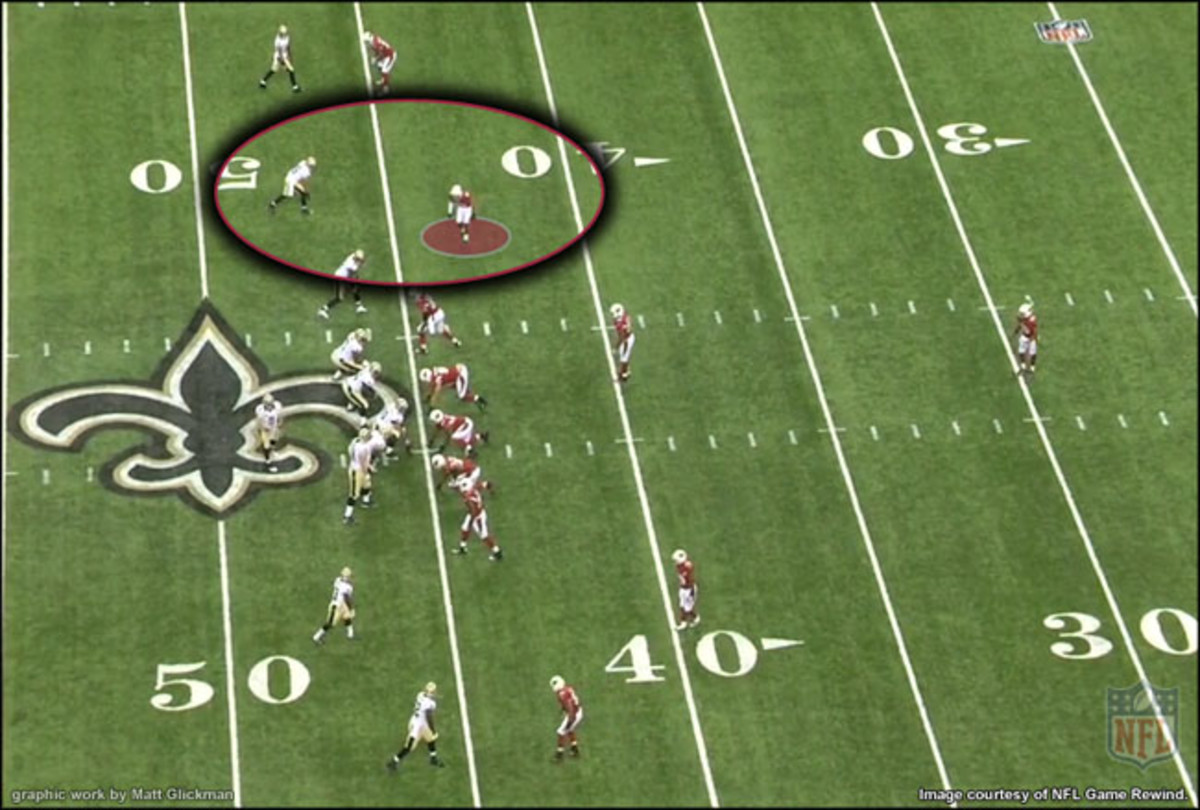
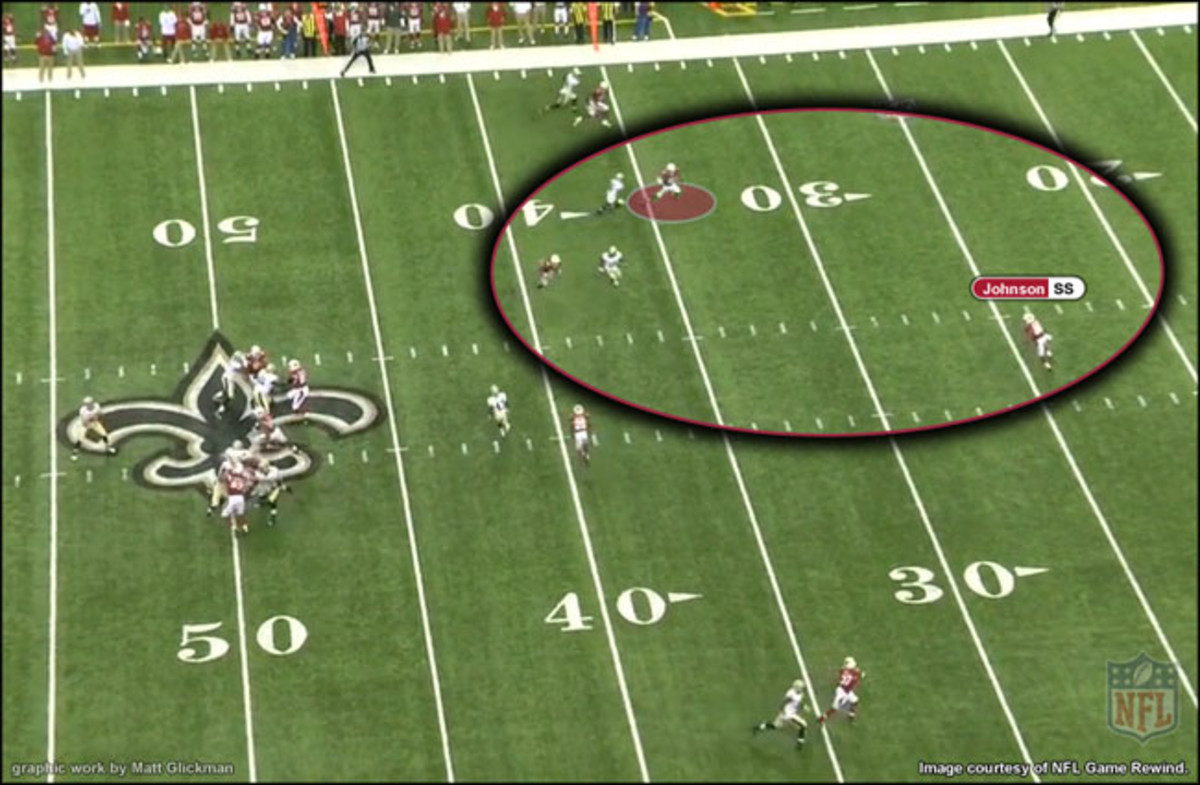
* * *
I point out that Marques Colston, a seventh-round drafted guy, really doesn’t run particularly well. But he plays down the seams and gets matched up against linebackers and strong safeties, whom he dominates. This is what Sean Payton and Brees do.
“And they flex Jimmy Graham out, put him at the ‘3’ (the furthest inside receiver in trips),” Mathieu adds. “Initially you’re thinking: hey put a cover guy on Graham. But then you might be leaving a linebacker on a wide receiver somewhere. Anyway you cut it, a linebacker is going to have to cover a pretty good receiver.”
I ask him what he thinks of the Graham trade to Seattle.
“I mean I understand the Seahawks want that red-zone presence, you know, but I don’t know about him in the NFC West; it’s very physical. He’s going to have to play in a line, you know what I mean? He’s not going to get flexed out and stuff like that. He’s going to have to stand in line with those big boys.”
But gosh, Graham sure moves well for a guy of his build, doesn’t he? He moved well a few times in this game, once against you that we’ll see coming up.
“That’s the thing about this game. We knew with Jimmy either it was going to be him trying to get to the flats or him trying to run up the seam for a big play.”
Because of the high volume of blitzes in the scheme run by then-defensive coordinator Todd Bowles, I’d often considered the Cardinals to be a man-to-man based defense. But their gameplan against the Saints was more coverage-based, and that meant Cover-3 zone with matchup concepts.
The seventh play of the game offered a great snapshot of this foundation.
“If the ‘2 receiver’ went vertical—2 is Colston—if 2 went vertical then my responsibility was to stay on Colston. But ‘3’ went to the flats so it’s an exchange between me and that linebacker right there.”
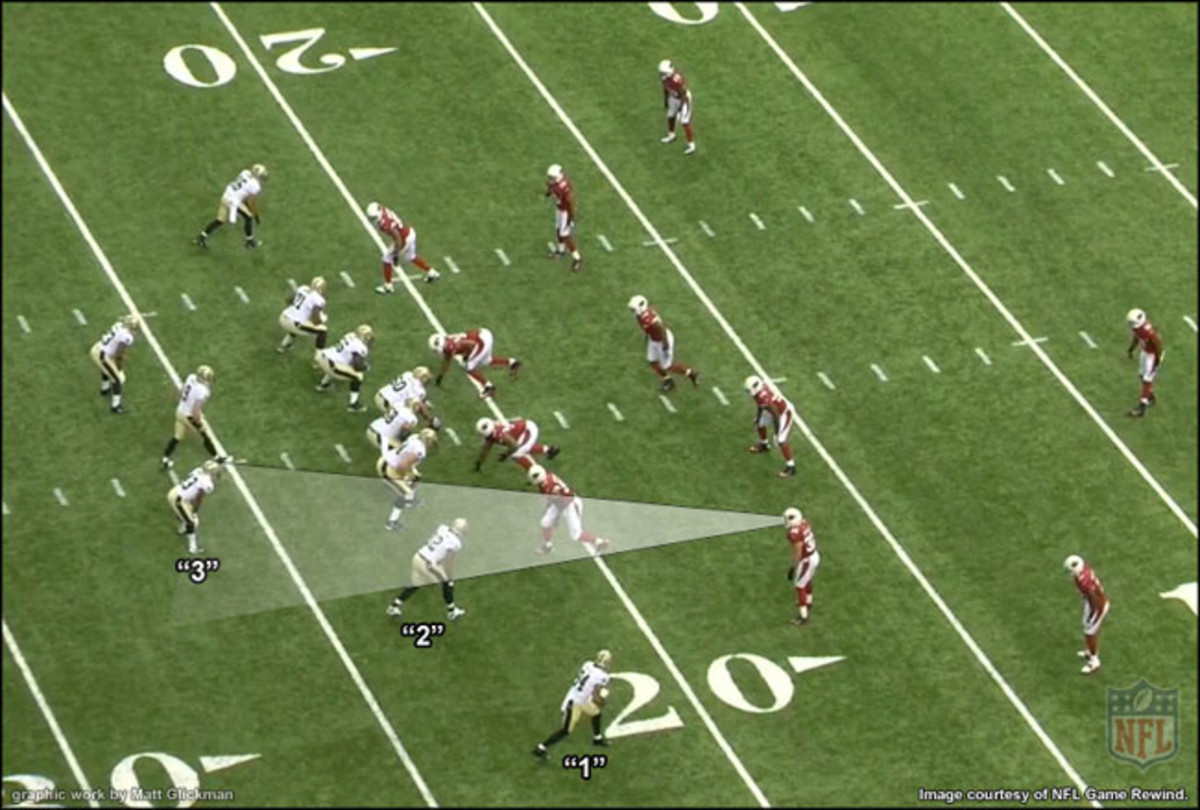
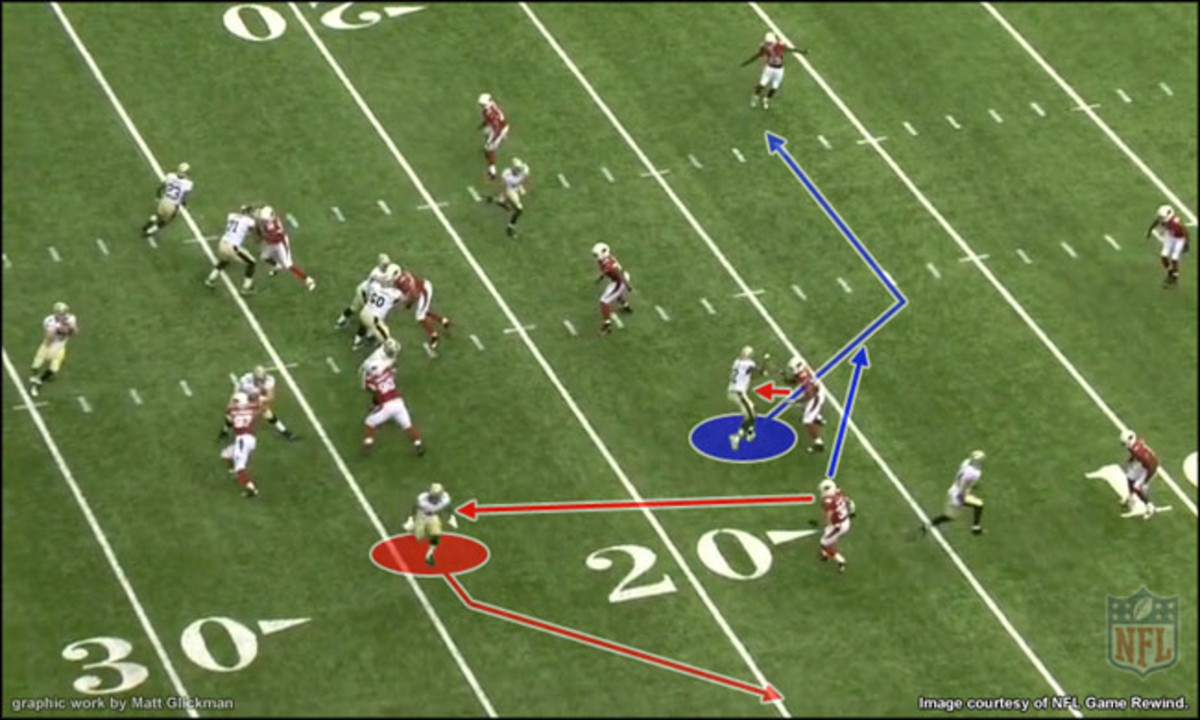
* * *
The next play is a 27-yard touchdown to Robert Meachem on which the Cardinals were fooled by a fake bubble screen to Darren Sproles.
“So here’s the same concept initially, right? But now I’m working with the cornerback. If 1 and 2 exchange, me and the corner would naturally exchange. It would naturally be easier for us to cover that. But you know, the communication means Jerraud Powers [the corner] wasn’t on the same page on that one. I’m a seam-flat player in this concept. I only go down the seam if ‘2’ goes down the seam. But I have the seam-flat, so if there’s an exchange, then I have the flat.”
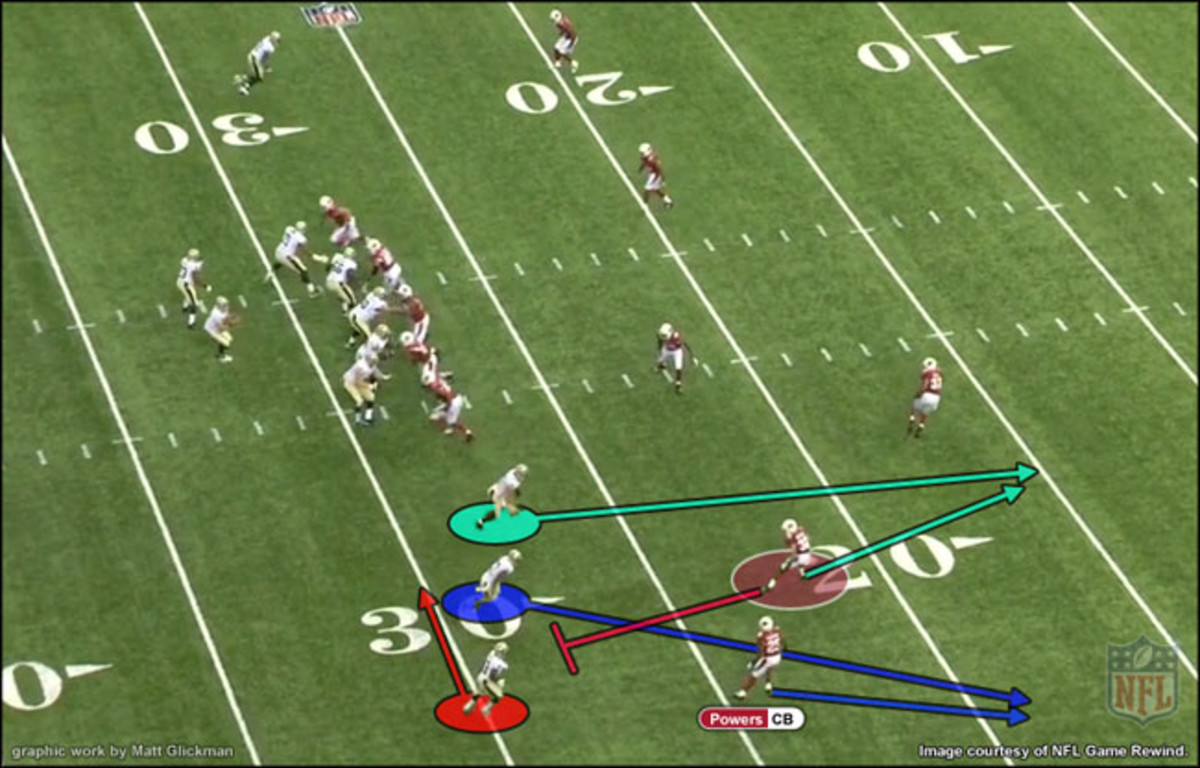
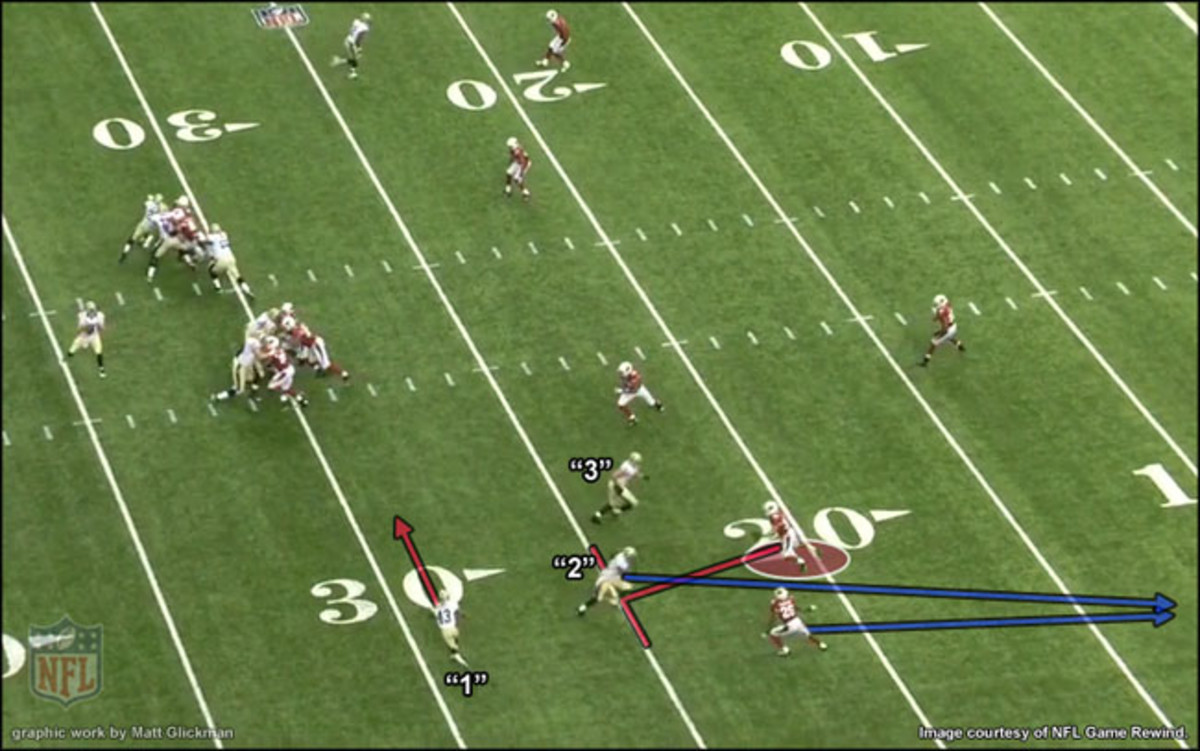
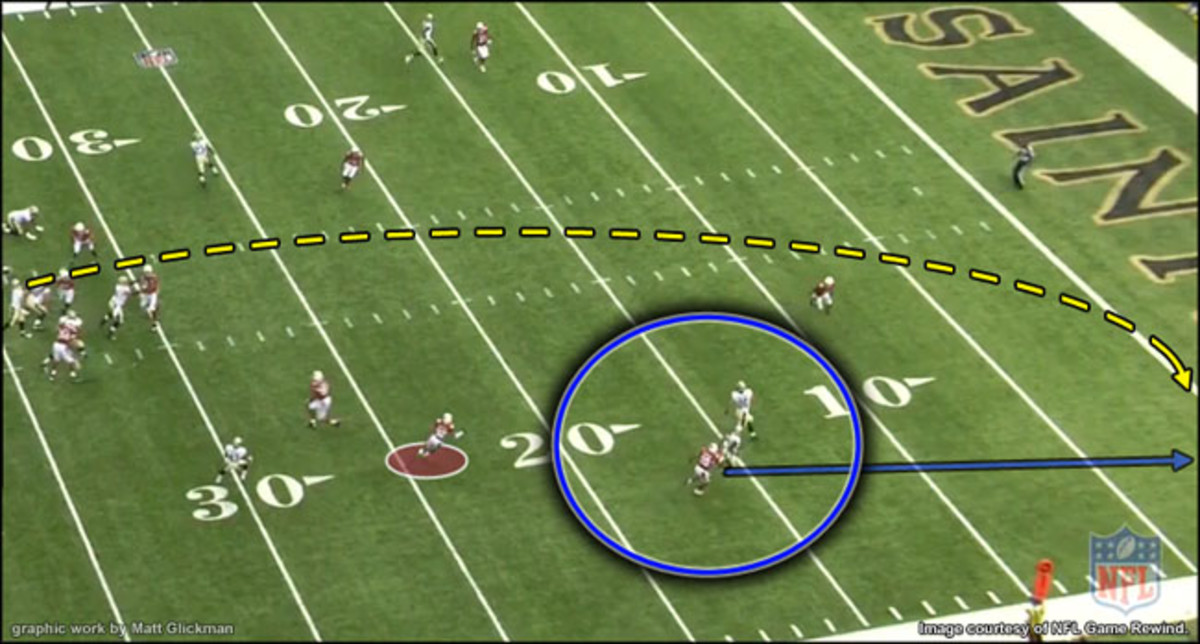
Powers recognized his responsibility, but far too late. He was beat handily over the top. It wouldn’t have mattered. The inside linebacker was supposed to run down the seam with Graham but instead reacted to the bubble screen fake.
“That’s what the Saints do. They get you confused for a play or two.”
* * *
Next series.
“I think the first possession we didn’t blitz them at all. We sat back in coverage playing zone, Cover-3 stuff like that, and they scored. So we just figured, let’s play our ball. Let’s just blitz them, play man-to-man and see how it goes.”
Mathieu blitzes on the first play. I ask if the blitz is related at all to linebacker Sam Acho’s movement. Is Acho supposed to go inside and take the offensive tackle away to give you more space against the running back?
“Yeah. Naturally I should have a two-way go. I had enough space. But then again, when those receivers come out of that bunch set you kind of have to round your blitz angle off and you don’t necessarily come off at an angle. They just squeeze it in there so tight, they want to see the blitz come, they don’t want to be surprised.”
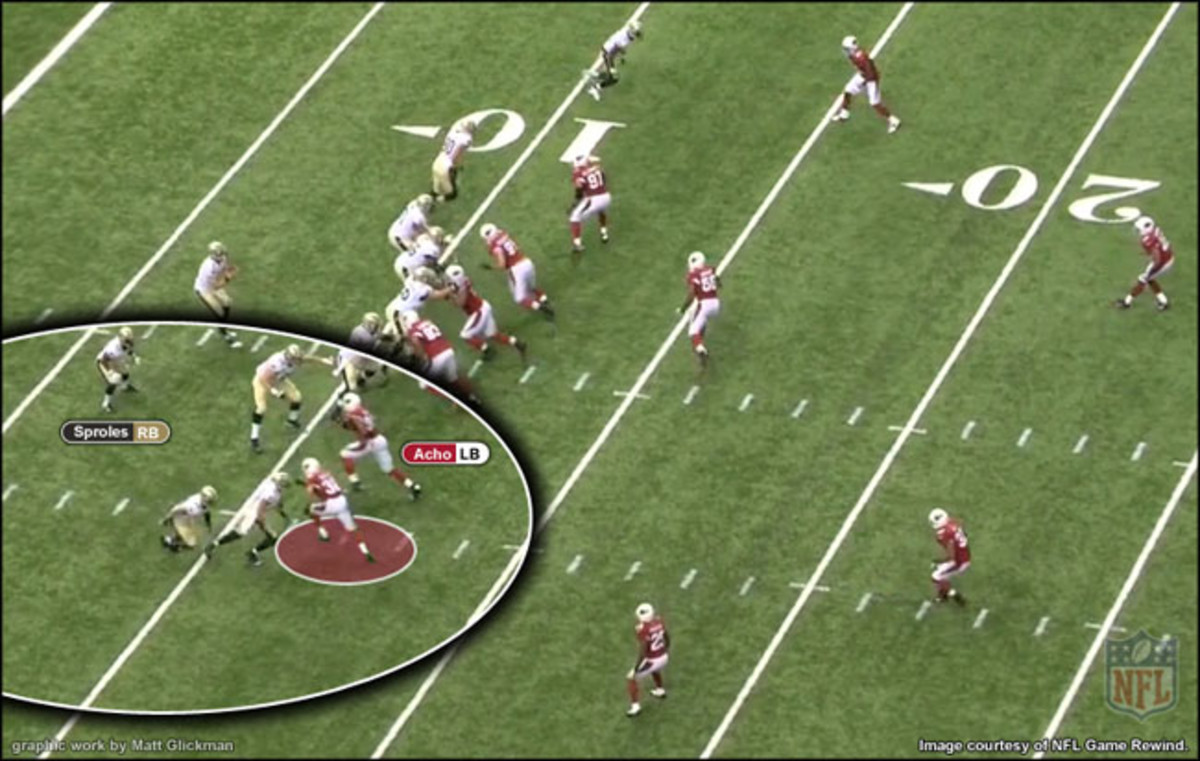
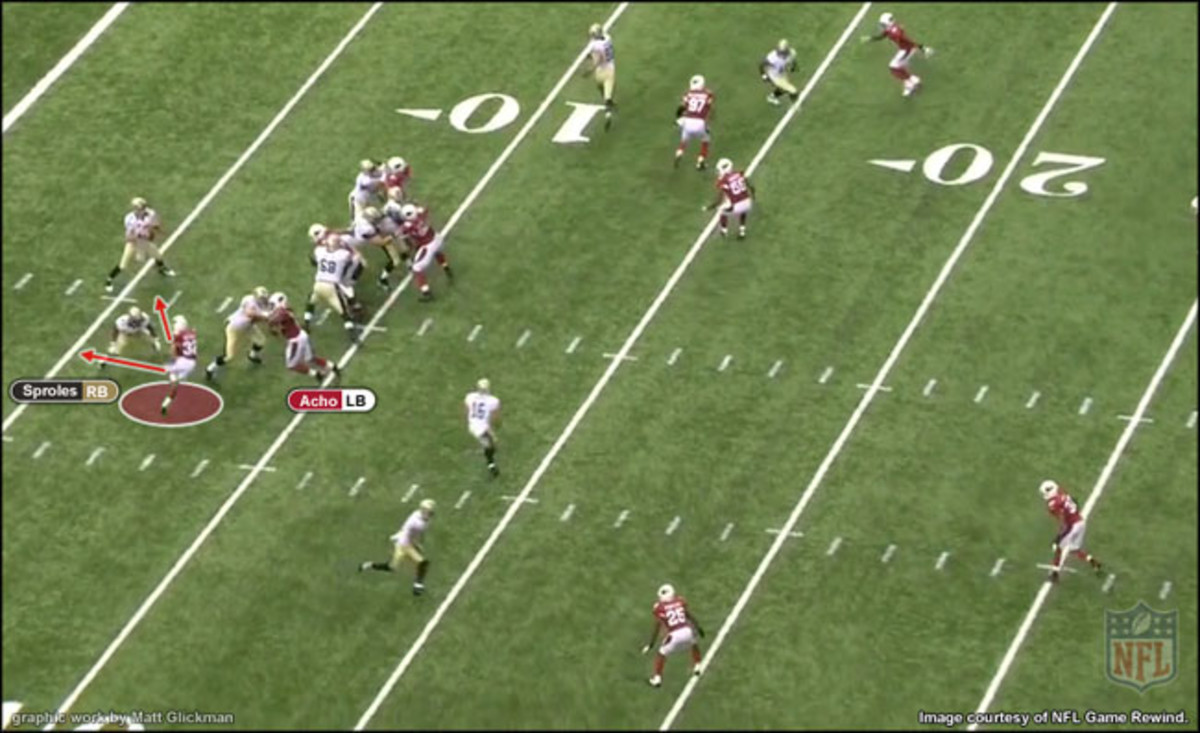
The blitzing didn’t last long in this game. Later, talking about that, Mathieu says, “I think we played too much man-zone and not enough man-blitzing. We’re not really playing our game here.”
I point out that the Cardinals didn’t even blitz in the two-minute situations, something Bowles almost always does. “Right,” Mathieu says, with a laugh. “That’s when we know we’re losing!”
* * *
Late in the second quarter was when the tip of Johnson’s middle finger seceded from the rest of his hand. Mathieu moved to free safety, a position he’d only played once in his life—at LSU, when Eric Reid had been injured.
Were you nervous back there?
“Yeah.”
You’re the last line of defense now.
“And Rashad is one of those guys, he understands defensive fronts and he’s cerebral, he understands what’s going on. For me, this was my first rodeo. I was out there like… I’m in control of all this right now?”
Were you making the defensive calls?
“Yeah I was. But for me, I’m not as quick on my feet. [The calls] will come to me but I’m not as quick as Rashad.”
Mind you, this was Mathieu’s third NFL game. He’s since grown, and now plays more snaps at safety, usually when Arizona is in a base 3-4 or 4-3 package. Here versus the Saints, his biggest concern was just keeping the action in front of him, especially given the Saints’ propensity to run four deep vertical routes. Mathieu survived the trial by fire. And with the Cardinals playing more nickel and dime as the game progressed, he wound up spending most of his time back in the slot anyway.
• FILM ROOM WITH AARON DONALD: The budding superstar breaks down what it takes to win in the trenches.
* * *
As our afternoon progresses, the conversation continues circling back to the matchup problems that the Saints cause through creative and diverse formations. “You know the Saints are going to run what they run and they’re going to run it well,” Mathieu says. “They’re going to run it out of every formation [and personnel package]. And they’re going to try to work the seams, work the [flats].”
As we chat, the Yorkie (named “King,” I learn) makes regular appearances. Mathieu lives with his girlfriend, Sydni and their one-year-old son, Tyrann Jr. King spends most of his time with Sydni in the back near the open kitchen and family room area (two of the rooms that are furnished). But every few minutes, he scampers back into the dining room and runs more laps before hopping on the table and into the lap of the visitor he, for some reason, has to keep smelling.
“I need to find him a mate, man,” Mathieu says the first time King does this. Around the fourth or fifth time, Mathieu rises from his chair, shakes his head and saunters towards the dog in the way of a man frustrated not because of his pet’s rambunctious, but because his pet just melted his heart. King is one off those dogs you just can’t bring yourself to discipline. He eludes Mathieu for a bit (maybe two or three missed tackles by the DB) before relenting. “He just wants all the attention,” Mathieu says, scooping the dog in his arms. “Don’t get a Yorkie.” Instead of taking the dog back to Sydni, he sets King in his lap and gives him a kiss.
* * *
The biggest issue throughout this game was how to match up with Graham. Originally, safety Yeremiah Bell was on him. But plans changed after Graham caught four balls for 62 yards and a touchdown in the first half.
“It’s funny because when Coach Bowles came in at halftime, he said, ‘Tyrann you’re going to take Jimmy Graham.’” Mathieu cackles through the next part. “And Pat [Peterson] said, ‘Coach, you want our shortest DB on their tallest receiver!’”
The film keeps rolling. The Saints run a play-action concept.
“A screen play,” Mathieu says with a hint of admiration. “That’s the thing about them. I think they’ll be alright without Jimmy because with their play-action, they run so many verticals and seams. When you go play-action everyone’s thinking deep ball. And then they throw the screen and it goes for 30 yards. This happens like every game.”
On the next play, Graham is split out wide, alone on the weak side. Mathieu is lined up across from him. Earlier in the contest, Graham had aligned in a similar spot. I suggest that the ball, which was on the opposite hash, wouldn’t go to him. Brees isn’t a big outside-the-numbers thrower. “Nah,” Mathieu agreed. “I don’t think he’s got the juice to make that throw.”
But this time, the ball is on the near hash. Mathieu has been emphasizing to me all afternoon that the Saints throw almost all seam patterns, inside routes and screens. But, as Peterson had feared, the 6-foot-7 Graham, split out one-on-one against the 5-foot-9 rookie, is too enticing of a mismatch for Brees to pass up.
Graham beats Mathieu with a double move for 29 yards.
“I’m not thinking that Drew Brees is trying to throw the ball down the sideline. That’s not naturally his game,” Mathieu says. “And then Jimmy; he’s not naturally a double-move guy either. He’s going to try to big-body you or run a fade. With him, he came off the ball and he faked the slant, I’m going to drive it because I don’t see him as a guy that’s running a double move.”
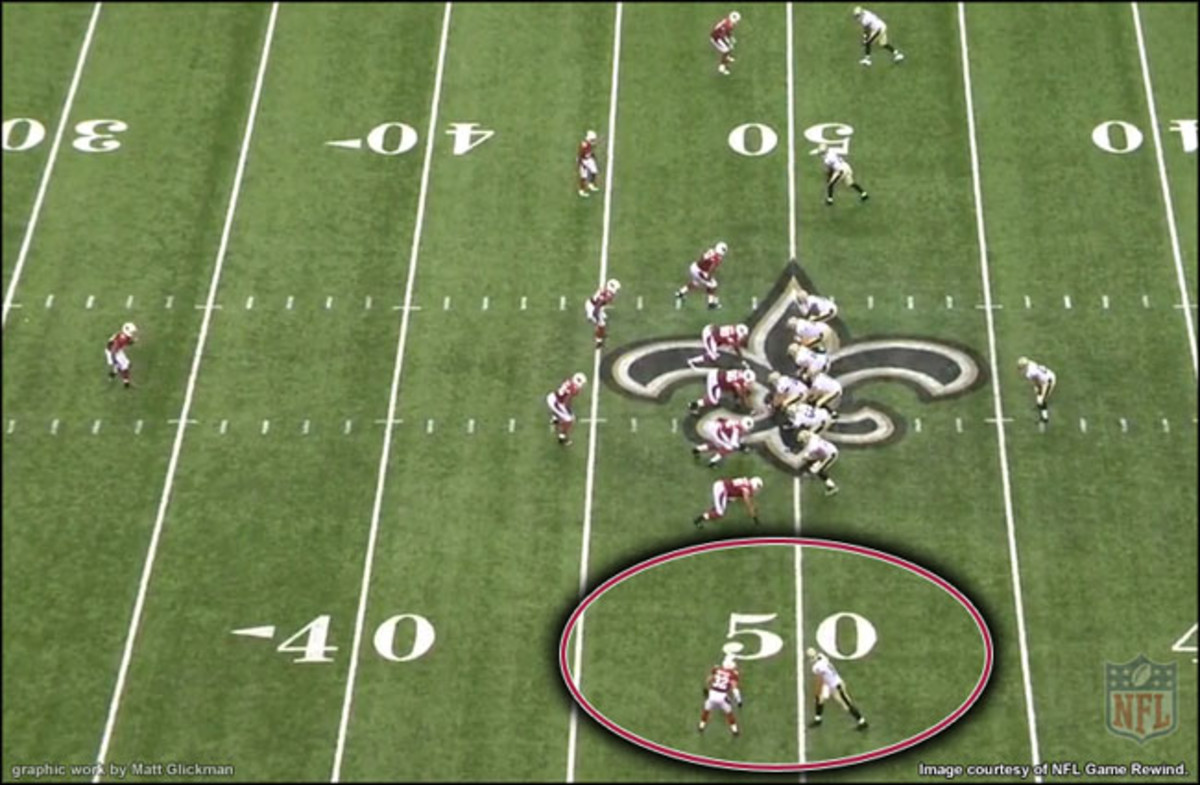
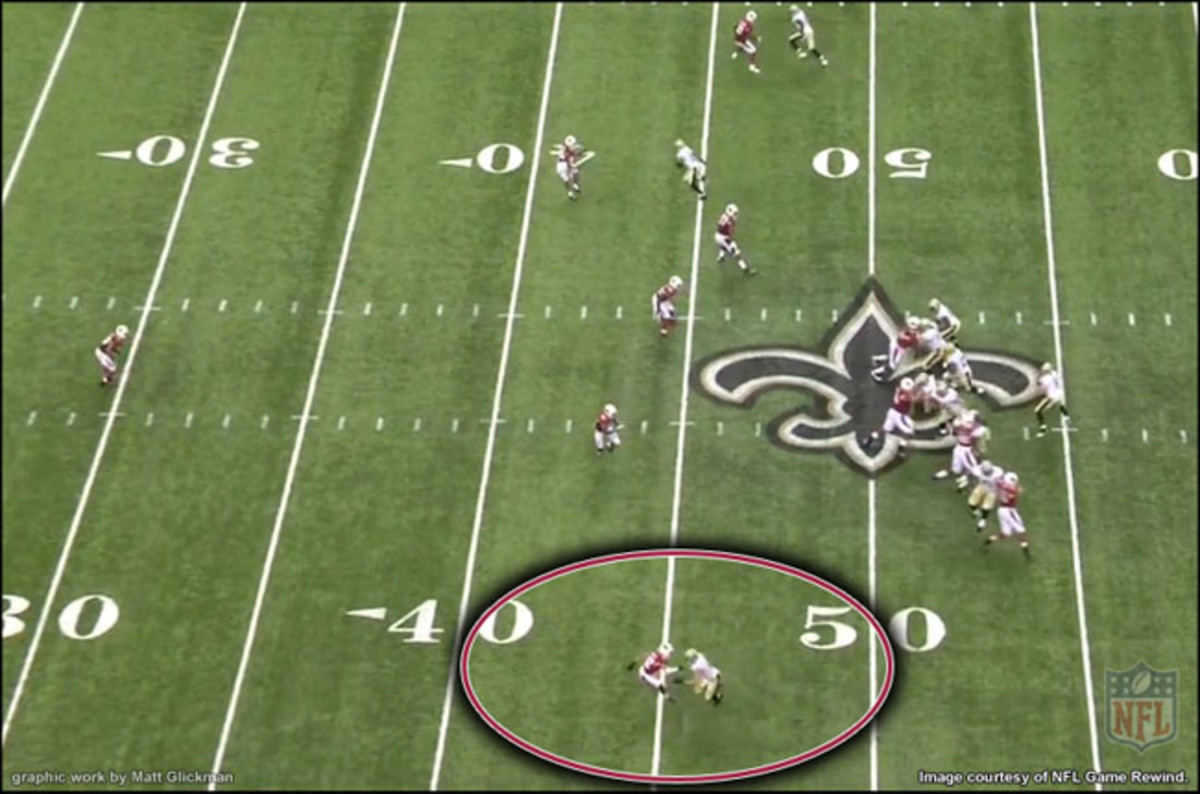
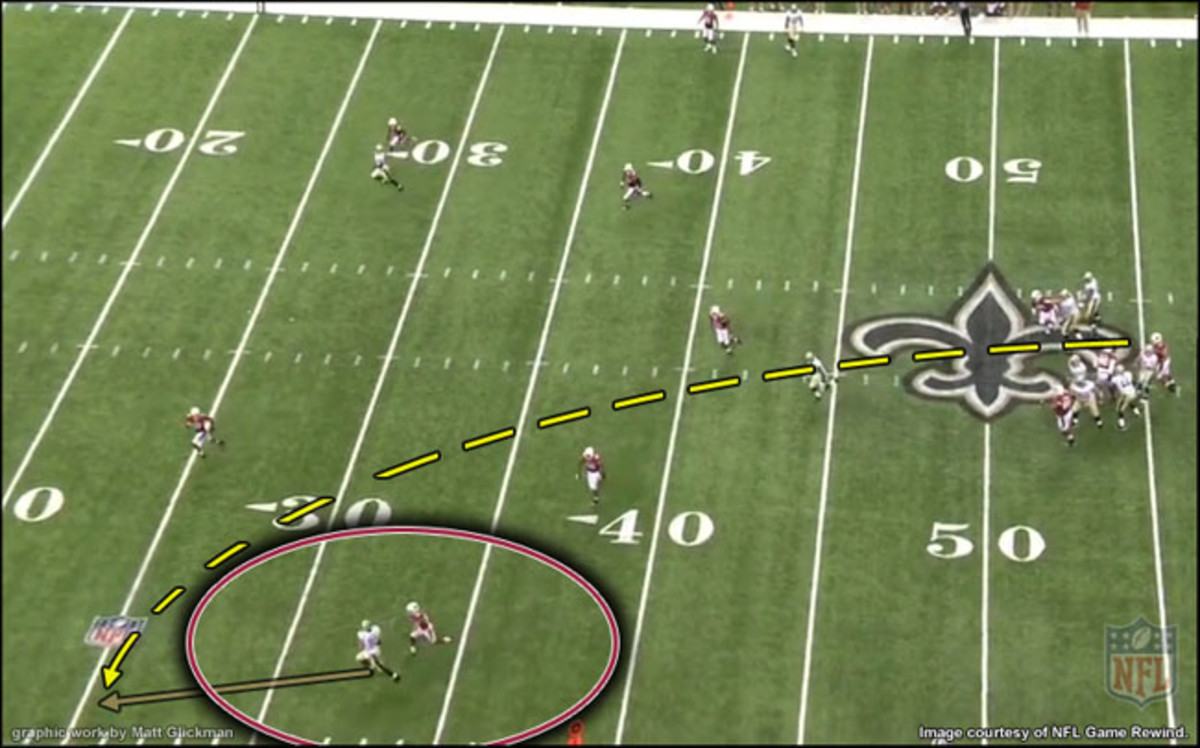
* * *
Driving on routes was another emphasis for Mathieu in this game. He took away a few throws by doing so, but he also got overzealous in the first half.
It came against one of the Saints myriad empty backfield looks. “I think the ball is coming out quickly here. Everything with the Saints is the middle of the field, even third-and-5. You would think a five-yard out route here, but nah, five-yard slant. This play I actually knew it was coming, I read it too fast and I just ran into him.”
Did you argue this call? Usually you DBs argue no matter what.
“Yeah I tried to but”—he pauses—“I mean, I ran all the way into him, I got there before him and the ball.” He laughs again.
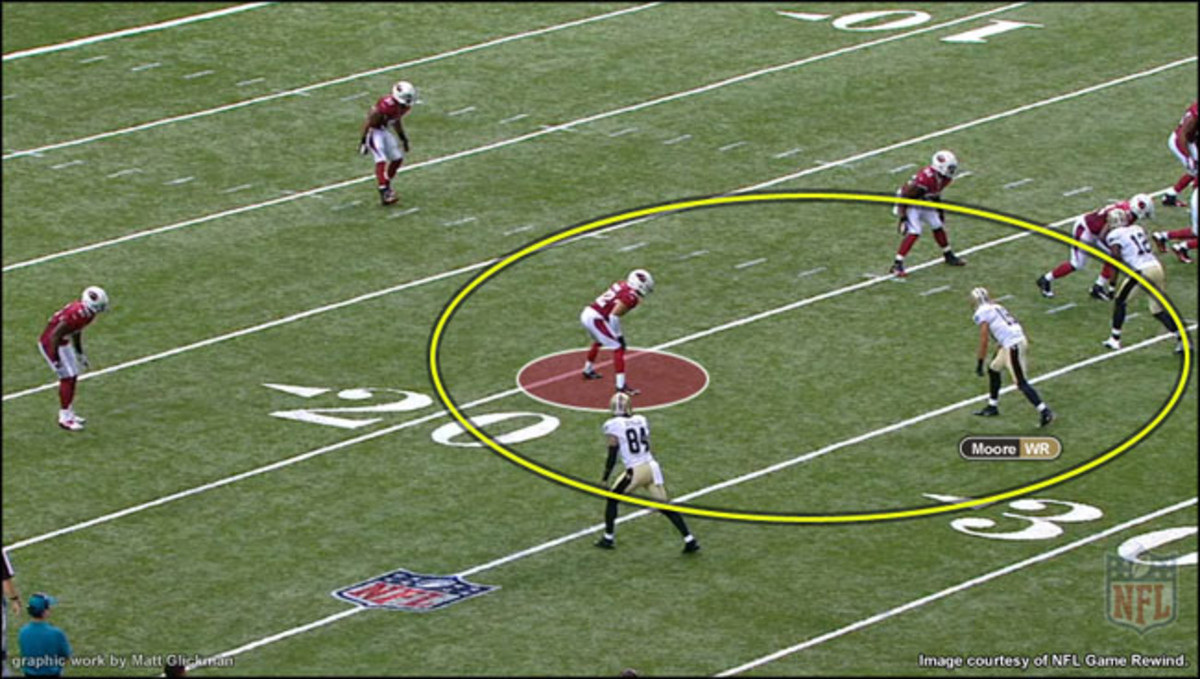
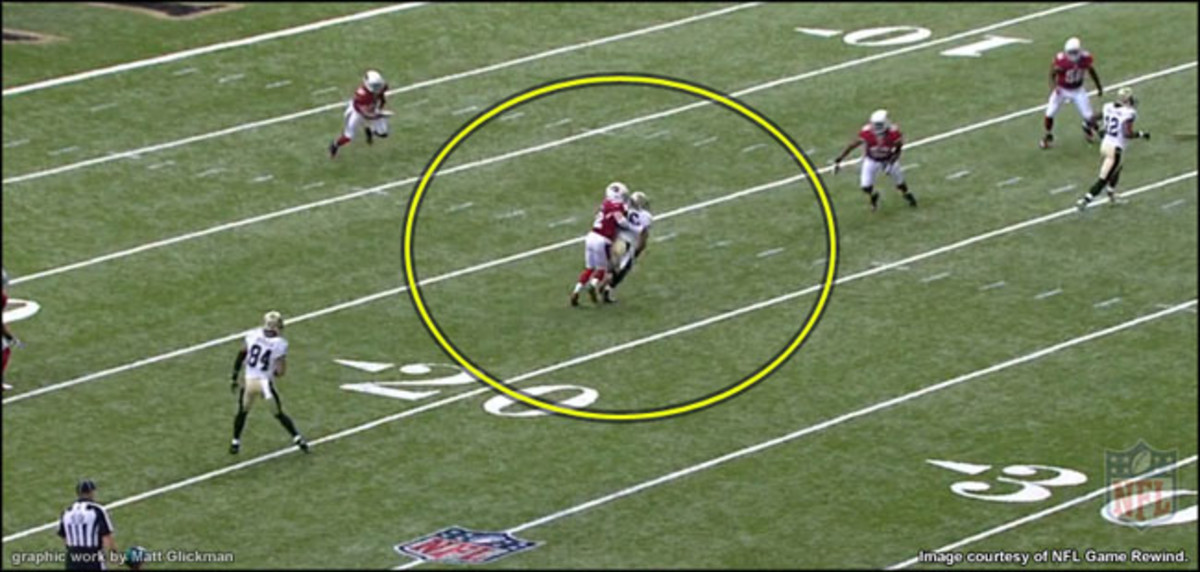
* * *
Later in the game, however, Mathieu makes an interception against this very same formation.
“Lance Moore ran this route [from this spot] on me four times. He only gave me one slant. When he comes off the ball, if he’s running that slant he’s going to give you that head nod so he can stick you. But if he’s running a seam he’s going to just run off the ball.”
You mean Lance Moore personally, or are you talking about all receivers in general here?
“Him personally. The difference between that play and the [pass interference] play is when he comes off the ball, he gets to that three, four-yard mark and he’s going to start to shake you. But on the interception here he was just trying to stem me and get leverage on me.
“I just think it was a bad ball, personally. I don’t think it was the receiver’s fault. Because I was going to be on top of him regardless. I was on top of him the four or five times he ran it before. I think [Brees] was kinda just trying to force that one.”
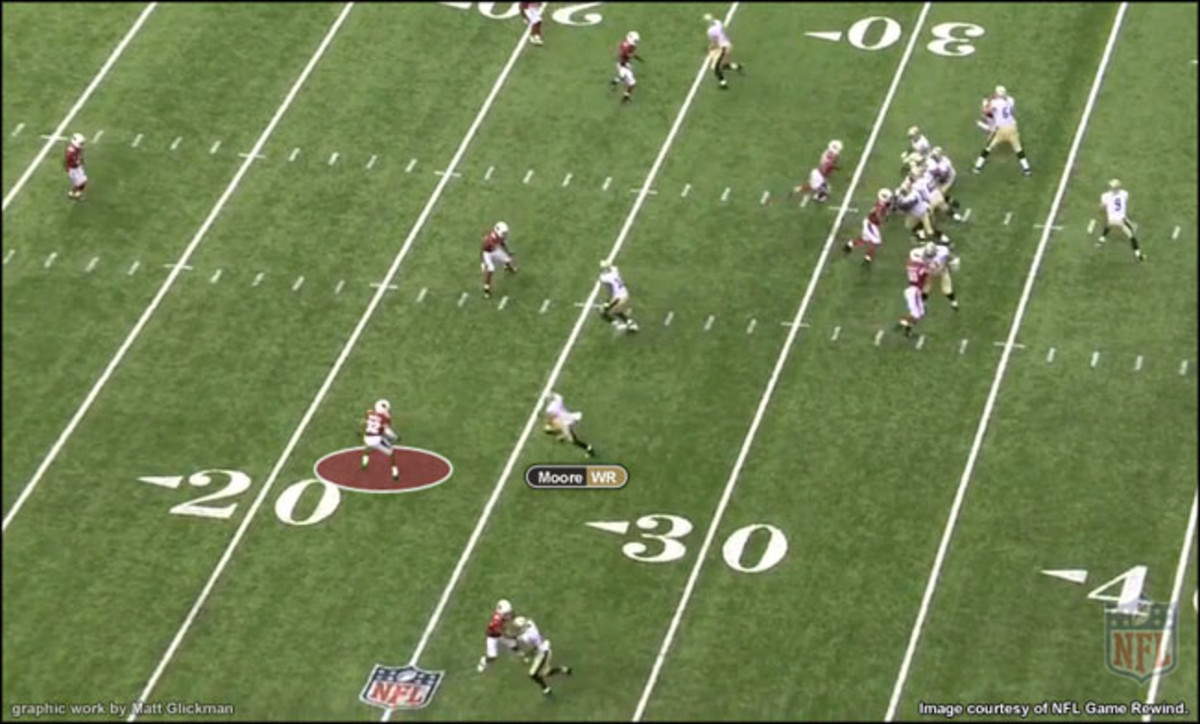
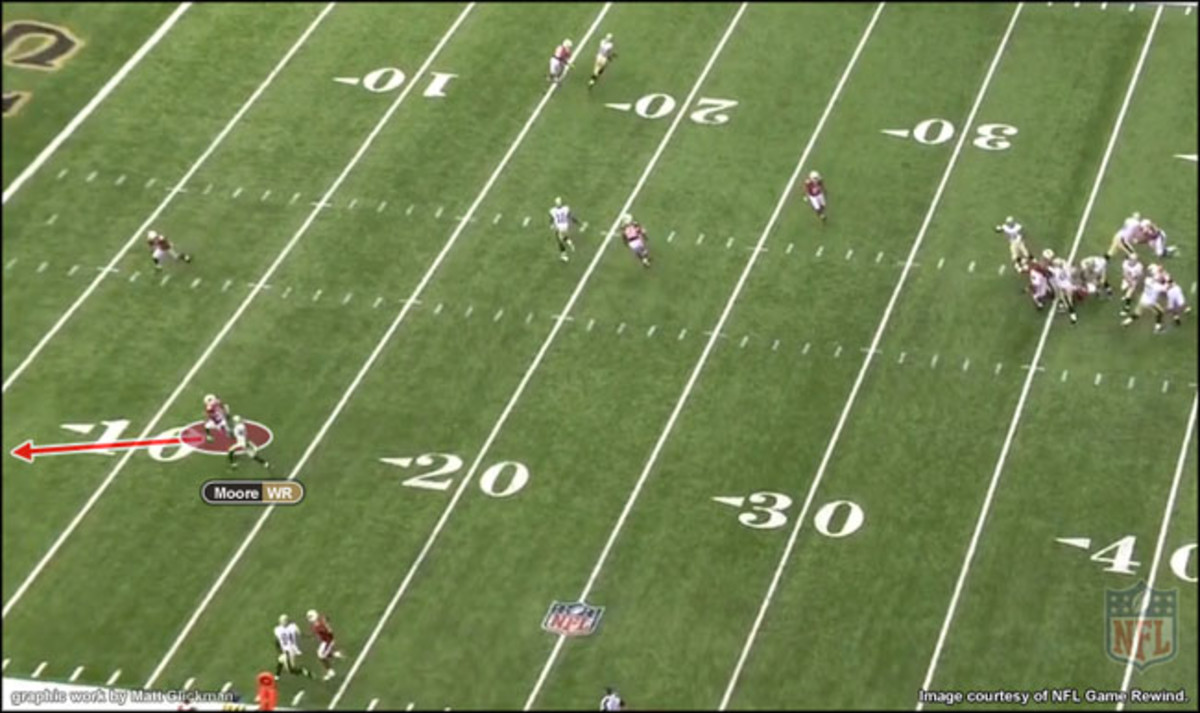
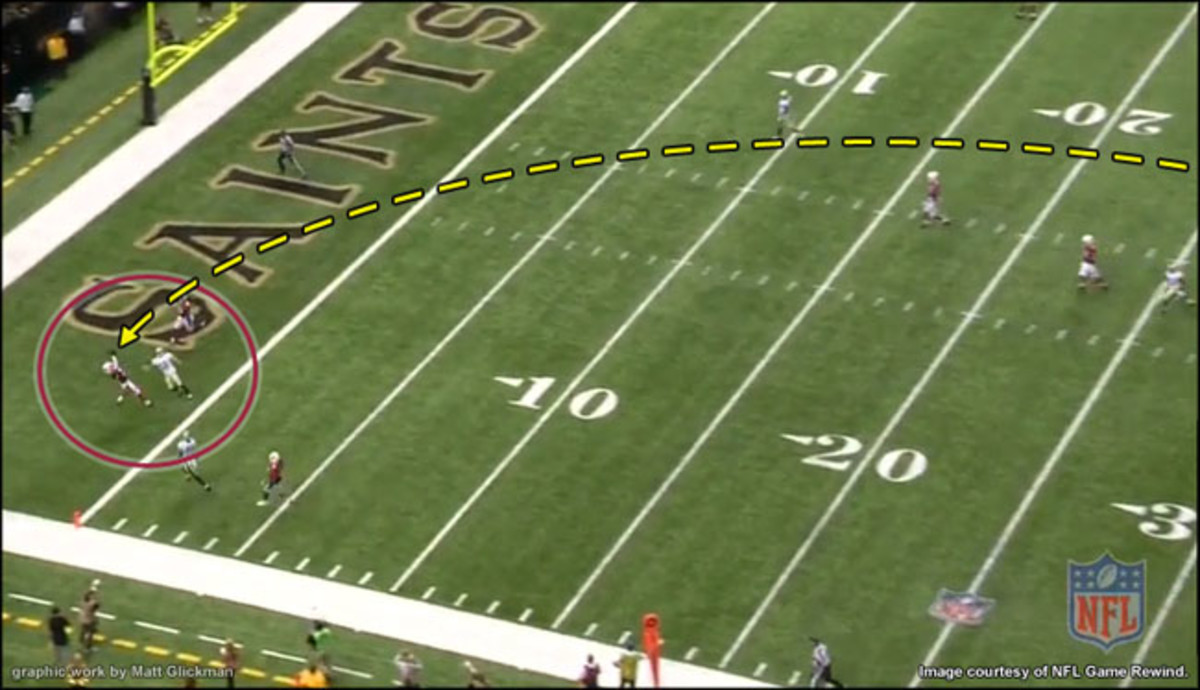
* * *
Later in the game, Mathieu delivers a fierce hit on running back Pierre Thomas, an offseason hangout buddy.
The “Honey Badger” nickname comes up.
“Initially I didn’t like it, I wasn’t too happy about the honey part.”
You thought it sounded soft? Surely someone sent you that famous YouTube clip of the honey badger, right?
“My coach, our defensive coordinator back at LSU, John Chavis, he showed me the clip after our West Virginia game. And he was like, ‘Man, I know you don’t like the nickname but I’m telling you one day you’re going to make a lot of money off it.’ And I was like, ‘Alright coach, sounds cool; I’ll just run with it.’”
As the game carries on our conversation drifts to more general topics. We get to talking about wide receivers and I remember seeing, before halftime, wideout Kenny Stills run a lazy decoy route.
“That doesn’t surprise me, not at all,” Mathieu said.
About Stills or just wide receivers?
“Just the receivers in general. Most of them are divas. If they’re not getting the ball you can tell. You know what I mean?”
A wry smile crosses Mathieu’s face. And then, again, he laughs.
